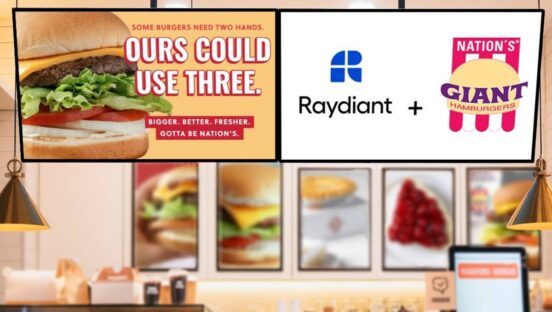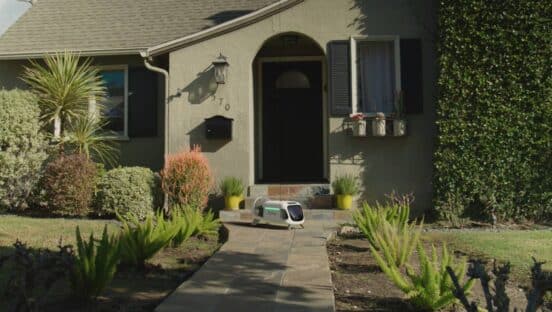As restaurants progress from takeout and delivery to outdoor dining and, finally, indoor dining, they are facing up to the fact that the new normal looks nothing like the old normal. Ensuring guests a satisfactory dining experience has gotten a whole lot more complicated. Where previously, the restaurant focused on menu, service and ambiance, they now also have to deliver on new levels of cleanliness, social distancing and monitoring the health of both staff and guests.
The Food and Drug administration (FDA) has issued guidelines Best Practices for Retail Food Stores, Restaurants, and Food Pick-Up/Delivery Services During the COVID-19 Pandemic. The National Restaurant Association (NRA) issued COVID-19 Reopening Guidance, too. To stay in compliance with these new guidelines, managers need to totally overhaul their daily operations to incorporate these mandated health, hygiene and social distancing practices.
While most restaurants already have significant health and safety processes built into their checklists, they will need to update and expand those practices in order to meet their state and local requirements. As the Association guidance points out: “The purpose of this guidance is to build on the already established best practices and requirements available that address specific health and safety concerns related to the spread of COVID-19, and to put those protocols into practice as state and local officials begin to open communities and businesses.”
It’s not enough for operators to implement these practices. They also need to be able to document them so that they can demonstrate that they are in compliance to local health officials. After all, if cities and restaurant compliance organizations start to conduct “busts” on improper sanitation, those restaurants with a ready record of their compliance will win the day.
Implementing, monitoring, and documenting health and safety practices will also help restaurants win the public’s trust. As a June 22 CNBC story, “Consumers are eating more restaurant meals, but many are more cautious about going out to eat,” reports, “A Bank of America survey of 1,000 people on June 18 found that about 32 percent do not think they will be comfortable dining in a restaurant until 2021, up sharply from the 20 percent in a similar survey in April.”
McDonald’s Leads the Way
As America’s largest quick-serve restaurant brand, McDonald’s is a case in point. With its drive-through capabilities, McDonald’s has been well positioned to weather the COVID storm. However, the return to in-store dining is as challenging for McDonald’s as it is for any other brand.
There are over 13,000 McDonald’s locations within the U.S., more than 600 company-owned McDonald’s locations, and approximately 210,000 McDonald’s employees. How does McDonald’s plan to deliver a consistent guest experience across so many locations?
For one thing, McDonald’s has produced its own Dine-In Reopening Playbook, which includes detailed instructions on everything from social distancing to hygiene and cleanliness to crew and customer care guidelines.
McDonald’s is updating this information, as appropriate. For instance, it announced that, as of August 1, it will require all customers to wear masks inside U.S. restaurants. The brand also is delaying the reopening of indoor dining for 30 days while it stalls protective panels in both dining and cooking spaces.
What’s more, McDonald’s is expanding its Digital Checklist, which is used across all its locations, to include COVID-specific questions so that each of its restaurant operators can ensure guests that they are in compliance with CDC guidelines. The Digital Checklists provide transparency and accountability with real processes that employees are forced to complete while also ensuring consistency across all locations.
Daily Wellness Checks
To ensure the health of restaurant staff, operators are urged to conduct daily wellness and temperature checks as the beginning of each shift. Identifying sick employees before they enter the restaurant is the best way to keep them from interacting with other employees and customers and potentially spreading the virus.
Each location should screen every individual as they report for work. The screening process should begin with a series of questions, including:
- Have you washed your hands or used alcohol-based hand rub on entry?
- Do you have any of the following: cough, shortness of breath?
- Do you have at least two of these symptoms: Fever, Chills, Shaking, Muscle Pain, Headache, Loss of taste or smell, Sore Throat, Vomiting, Diarrhea
- Check your temperature. What are the results?
An employee who answers, “no” to the first question and “yes,” to any of the other questions should be directed to an appropriately social distanced consultation with a manager who will most likely send them home. Those who answer “no” will proceed to a station where a manager will take their temperature to determine if it is above 99.5 degrees.
Here, again, operators can look to technology to help ensure a consistent check-in experience across all locations. With an automated temperature check station installed in the same location where employees clock in, employees can quickly take their own temperatures and determine if it is below 99.5 degrees. Providing employees with an app for their daily check-in questions also speeds up the check-in process.
But perhaps the greatest benefit of automating the check-in process is the ability to eliminate the element of touch. While potentially sick employees are identified quickly and prevented from entering the restaurant. Those same individuals have not touched the check-in equipment that the rest of the staff will be using.
The length of quarantine for any employee at risk for COVID-19 will be determined by local health departments. Ideally, a written document from a qualified healthcare provider will also be required before employees are cleared to return to work.
As restaurants adapt to the new normal, operators can expect to see these and other technology innovations that will help them streamline and track the new procedures so necessary in the face of the Covid-19 pandemic.
Derek Stangle is the Vice President, Marketing at Squadle, Inc., a technology company that enables multi-unit operators to simplify complex operations and streamline food safety.












